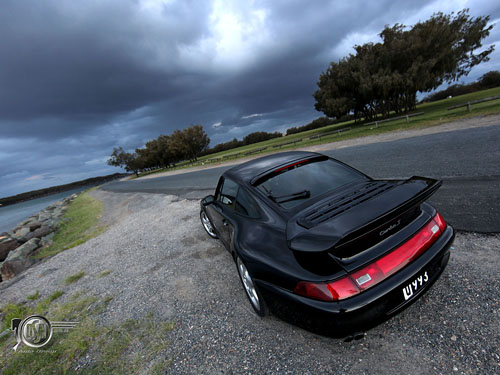Anybody here have any experience with these cars?
Specifically, how to spot oil seal leakage without waiting for a puddle to collect on the garage floor?
Did not read the whole thread but I am assuming that you are thinking of purchasing one and don't have a week to spend in the seller's garage. With that in mind, I am actually going to try and talk you out of a 996...
As with any P-car, the first rule you must follow is to get a PPI (Pre-Purchase Inspection). For between $200 and $300, you can avoid making a far costlier mistake. I would not go to a dealership for this unless you have no alternative. There are specialty Porsche/German speed shops in most major cities who know the cars far, far better than parts-changers at dealerships.
This sort of inspection will also give you a relatively clear answer to your initial question about oil seepage.
That said, oil seepage, in many forms, plagues the 3.4L and 3.6L normally aspirated engines installed into Boxsters (986 & 987), 996's and early 997's. The 3.6L engine in the Turbo is different entirely is not affected.
The primary culprit of oil seepage is the RMS (Rear Main Seal). This seal has a tendency to... well... its just not well designed. To replace the seal, the engine needs to come out. This is slightly more expensive than an oil change. Sarcasm there.
Problem number two with the 3.4L and 3.6L N/A motors is the failure of the IMS (Intermediate Shaft). Again, not well designed. The details surrounding exactly *why* the IMS fails are still being worked out since the 996 is still a relatively new car and Porsche is silent on the failure rate. It is thought, currently, that oil collecting around the IMS and the bell-housing might be a sign of impending failure.
Either way, an IMS failure is catastrophic. Your engine is done. While thats bad enough, the design of the engine does not really allow it to be rebuilt. It must be replaced.
The trend here, with respect to both of the above captioned issues, as examples, and the car as a whole (apologies to 996 owners), is that Porsche built their first disposable 911. Early examples from 40+ years ago are still driving. 996's, in 40 years, will all be in junk yards.
The build quality and design philosophy reflects Porsche's financial situation at the time. Cars like the Boxster, Cayenne and, unfortunately, the 996, were designed to make money and keep the company independent. While this is obviously preferable to say, Mercedes Benz scooping them up, the cars built during this period reflect that philosophy.
Its a shame, really, because the 996 is a great car to drive. Very capable, quick enough, a boatload of fun and more advanced than previous versions of the 911. Unfortunately, cost aside, one of the biggest reasons that say, Ferrari owners end up defecting to Porsche, was lost. That reason was absolute reliability.
By and large, you can drive the air cooled cars forever so long as they are well maintained. It is not uncommon to see 3.0L's or 3.2L's from the late 70's through the 80's with 200,000, 300,000 and, in some cases, even 400,000 miles - and no engine work. The same can not be said of the newer cars and the failure's don't seem to follow any methodology. Some fail at 80,000 miles and some fail at 5,000 miles.
Point is, while the 996 may seem like a really attractive buy right now - and it is a lot of car for the money - there is a reason it is so cheap, second-hand, and the older cars actually fetch higher prices.
Now, on to those older cars... if you have never driven either of the previous two models, the 993 (1995-1998 in US) or the 964 (1989-1994 in US), you really owe it to yourself to try them.
In my not so humble opinion, the 993 is pretty much the best automobile the company ever made. Not an assembly line job, the car feels, especially in comparison to the rattle trap 996, like is was carved out of a solid block of granite. They are arguably the last of the stereotypical "German engineering" cars. Built like a bank vault and will go forever no matter how you abuse them.
The 993 is not without its issues. The 96-98 cars with OBD-II emissions have an issue with clogged SAI (Secondary Air Injection) ports. You can read more on it independent of this discussion, but the emissions farce that went into effect that year required a CEL (check engine light) to fire if the ports were clogged. The ports do substantially nothing. They are an emissions "gadget" which reduces emissions for about 15 seconds after start up. There are ways around the CEL, but its a pain. You can clean the SAI ports but it is difficult. Ultimately, like all the air cooled cars, you will need a top end rebuild anyway, at which point you can deal with the SAI and the weak valve guides which Porsche has been installing in 911 engines since the car was introduced. Why they didnt start using a harder metal in the 60's is beyond me...
Regardless, now that Im off on a tangent, try one of the older, air cooled cars. I prefer them in every aspect to their water-cooled brethren. They are more fun to drive, they have all the smells, sights and sounds you expect and, if you take care of them, they will provide you with years of trouble free ownership.
Besides, they just dont make hips like this anymore... The rest of ya can keep your Italian trash.

